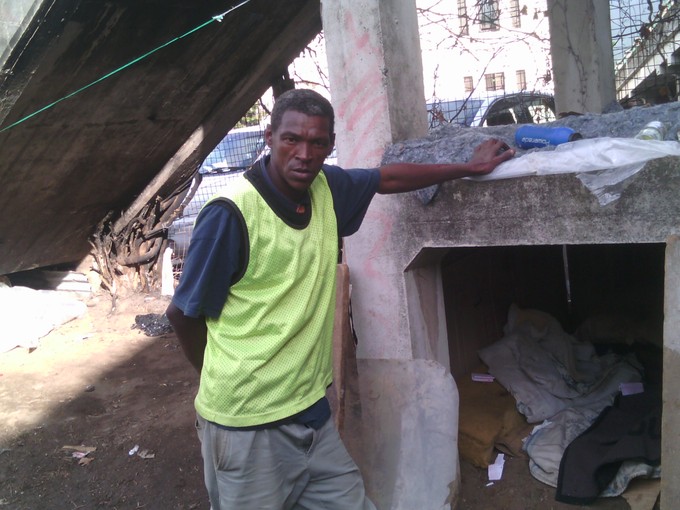No room at the shelter as winter approaches
Shelters can’t accommodate more people, says Street People’s Forum
Antony Lewis from Manenberg lives under the bridge at Rondebosch Station. He washes cars and also works as a car guard in the parking lot in front of the library.
He has been homeless for two years, and he’d rather live under the bridge than go into a shelter, even in winter, he says.
Lewis is one of many among Cape Town’s estimated 7,400 homeless who do not want a bed in a shelter. Of 4,377 people screened in a City of Cape Town reintegration programme between July 2015 and February 2016, the majority — 3,328 or 76% — refused assistance, according to Mayoral Committee Member for Social Development and Early Childhood Development, Councillor Suzette Little.
Not enough space in shelters
But those who do want a bed won’t find it easy to get one this winter.
The City of Cape Town is offering food, blankets and toiletries to shelters for the winter, but what is needed is more beds, says Greg Andrews, convener of the Street People’s Forum. There are only about 2,500 beds available in shelters in the metro area, says Andrews, and all of them are occupied.
As part of its Winter Readiness Programme, the City has invited shelters to apply for aid to manage the expected increase in street people looking for help over winter. Qualifying shelters will be provided with food, blankets, mattresses and toiletries.
“Some shelters are overrun by requests for assistance in winter, when many street people look for a warm and dry place to sleep. Our contribution is meant to ensure that these organisations can help as many people as possible,” says Little.
A total of R699,000 has been set aside for the programme. In 2014, 16 organisations qualified for aid and the number increased to 17 last year.
Either break the law or appear to be uncaring
But Andrews says the programme encourages shelters to take in extra people, which they are not allowed to do without breaking the law. Instead, he says, the City should provide new shelters for the winter.
In terms of fire and other regulations, there is a maximum number of people each shelter can accommodate.
The Winter Readiness Programme does not provide exemption from these regulations, he says. “By participating in the programme and taking in additional people, the organisations will break the law,” he says.
Taking in extra people would mean the shelters risked losing funding and even being prosecuted if something went wrong. But not participating makes the shelters look “callous and uncaring”, Andrews says.
The forum and and many of its member organisations have over the years raised this issue with the City, he says, but without success.
“I think Social Development should spend the money they have to provide more space, just a simple building where street people can be accommodated for the winter period,” says Andrews.
Like Lewis, Sivuyile Gwela, from the Eastern Cape, lives under the bridge at Rondebosch train station. He has lived there for eight years.
“When my parents died, our property in Khayelitsha was sold by my aunt so I had nowhere to stay,” he says.
“If anyone approaches me, I am willing to go and stay in a shelter,” says Gwela, who is 24 years-old.
But what he would like best is to join family members in the Eastern Cape.
“I really want to join them but I don’t have the money for bus fare.”
Support independent journalism
Donate using Payfast

Next: Colour does not explain today’s South Africa
Previous: No tenant will be evicted from flats owned by the province, says Madikizela
© 2016 GroundUp. 
This article is licensed under a Creative Commons Attribution-NoDerivatives 4.0 International License.
You may republish this article, so long as you credit the authors and GroundUp, and do not change the text. Please include a link back to the original article.

